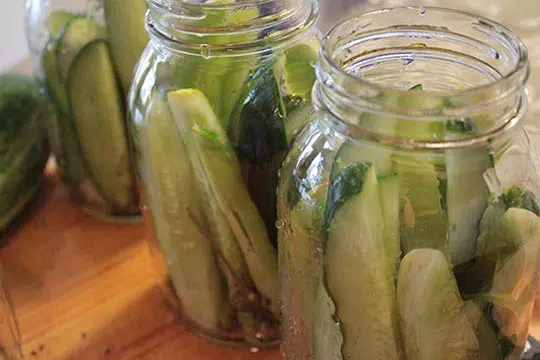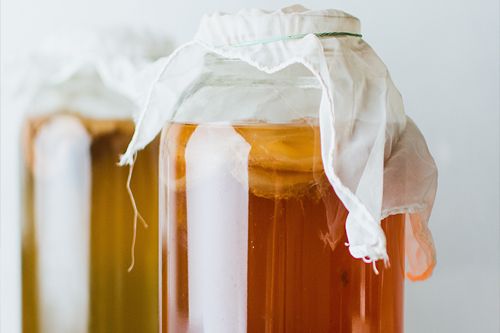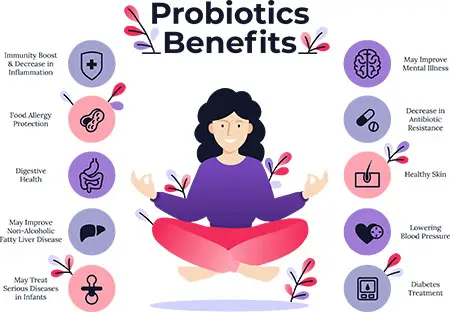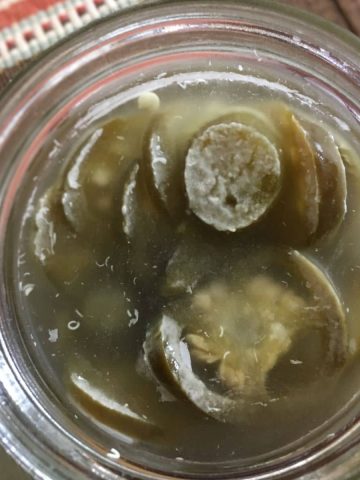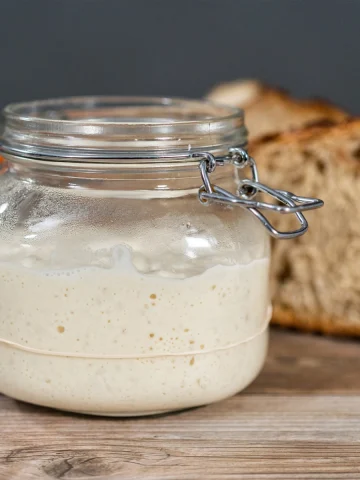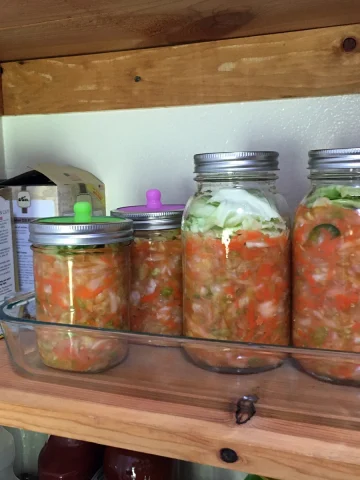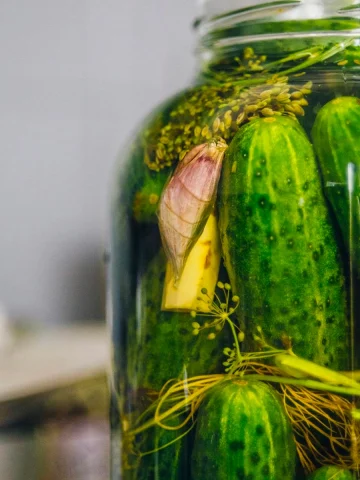Though some people may use the terms pickling and fermenting interchangeably, it turns out that the two processes do have their differences. Fermentation is converting carbohydrates in food to alcohol or acid by using microorganisms.
Pickling involves using an acidic brine and can help preserve the shelf life of certain foods. To learn more, read on to learn the differences between pickled foods and fermented foods.
Quite the Pickle: What is the Difference Between Pickled Foods and Fermented Foods?
Pickled Foods
Pickling is a means of preserving certain foods by immersing them in a liquid such as an acidic brine or vinegar. When a food item – and that could be anything from vegetables to eggs to fruits – is submerged in one of these liquids, and the pH maintained at 4.6 or lower, the shelf life of these items can now be extended for about three to four months.
The pickling process also changes the flavor of the pickled foods. The most well-known example would have to be that of a cucumber and a traditional pickled cucumber, most commonly known simply as a pickle.
Along with your favorite vegetables, you can add various antimicrobial herbs and spices, such as garlic or mustard seeds, to the brine to add flavor and keep the bad microbes at bay.
If you are considering making some pickled foods in your kitchen, there are many ways to do so:
Vinegar: Pickling with vinegar is probably one of the most popular methods. You will want to stick with a solution that is ⅔ vinegar and ⅓ water.
Any vinegar will do, so you can choose white vinegar, apple cider vinegar, or any other to suit your taste.
You will also want to include salt in your brine as it does its part to ensure that bacteria and mold will not take over. Avoid iodized salt and stick with sea salt or rock salt instead.
Wine: What can’t wine do? Using white wine, a splash of vinegar, sugar, and salt is a great way to give some of your favorite vegetables a unique pickled taste while still maintaining the right amount of crunch.
Oil: Using olive oil to pickle is a popular method in some parts of Asia. To pickle in oil, you will want to start with cooked vegetables by roasting or grilling them. Your pickling brine will be made of two parts olive oil to one part vinegar.
Add salt to ensure that the bacteria balance stays healthy. Once marinated, you can refrigerate it for up to four months. The olive oil should harden when cold.
If yours does not, consider putting it into the freezer, as your refrigerator may not be cold enough.
Salt: Salt carries a heavy load when it comes to pickling. It does its part to ensure that the mix of bacteria is healthy. Use about 1.5 tablespoons of salt for every two cups of liquid.
Avoid using iodized salt, as it can create a cloudy brine. Pickling salt can be found in most grocery stores.
Sugar: If you like a bit of sweetness with your pickled foods, add sugar. Once you have combined your vegetables with their brine, add about ¼ cup of sugar for every two cups of water.
What's the Difference Between Sauerkraut and Kimchi?
Health Benefits of Pickled Foods
The good news about pickled foods is that they are super tasty. The better news is that they are good for you. Their electrolyte content helps to fight off muscle cramps after exercise.
This makes them a great alternative to a sugary sports drink. They also help to improve digestive health. Pickled foods may even help to hold off sugar cravings.
The next time you are craving something sweet, try a pickle instead.
Pickling Pros
There are many advantages to pickling. It is a great way to preserve food which is good news if you ever experience a bumper crop of cucumbers in your garden. It prevents foods from spoiling while adding beneficial bacteria to your diet.
Pickle Cons
If you are new to pickling, you will want to carefully follow your recipe to ensure the right mix of acid and salt in properly sterilized jars. If this process is off, it can result in the overgrowth of harmful bacteria.
What Can be Pickled?
Lots of things! Most commonly, vegetables are pickled as the brine gives them a tangy, salty flavor while maintaining some of their crunches.
Eggs and cheese can also be pickled to extend their shelf life and impart flavor. Marinated mozzarella is commonly sold in a tasty, oily brine.
Fermented Foods
Fermented foods are those that have been exposed to organic compounds along with helpful microorganisms. This process involves converting the sugar in food to alcohol.
This differs from pickling as the foods are not submerged in a salty, acidic brine. The most popular fermented items include wine, vinegar, beer, and sauerkraut.
Like pickling, there are several ways to ferment foods:
Salt: To ferment your favorite meats or vegetables, chop or shred them and add a generous amount – about three tablespoons per quart of veggies – of salt to draw out the liquid.
You may need to knead the vegetables to help the salt do its job. Though fermentation will start to change the flavor of the food in about three days, the process can take a week or even several months, depending on your flavor preference.
Whey: A byproduct of milk production that results when curds have been strained from milk, whey is used to ferment several foods. Popular snacks such as yogurt and drinks like kefir are fermented using whey.
Yeast: Sourdough bread gets its name from the flavor imparted thanks to the fermentation process. You need flour, water, and active dry yeast to make a sourdough starter.
Store it in a sterilized jar until it starts to bubble. Make sure the jar is big enough to allow for your ingredients to expand.
Yeast starters can grow to about four times their original size.
SCOBY: In fermentation, a symbiotic culture of bacteria and yeast is known as SCOBY. Popular fermented products such as kombucha are made using this method.
You can make your own SCOBY by mixing sweet tea with one cup of store-bought unflavored kombucha.
Health Benefits of Fermented Foods
Just like pickled foods, fermented foods are also packed with probiotic bacteria. The bacteria and enzymes they contain are great for maintaining a healthy digestive system.
They also have anti-fungal, anti-inflammatory, and antioxidant qualities.
The Lacto-fermentation, brought on through lactobacillus, gives fermented foods and drinks their signature tangy and sour taste and creates probiotics that aid in digestion.
Fermentation Pros
In addition to the health benefits, the fermentation process can also extend the shelf life of foods. It has even been shown to increase the availability of the vitamins and minerals contained in certain foods.
Fermented foods promote beneficial gut bacteria and help maintain a healthy digestive system.
Fermentation Cons:
The most common reaction to fermented foods is bloating and increased gas. It is smart to start eating only 1 -2 tablespoons of fermented food daily and work your way up.
Sauerkraut is known to be high in histamine. If you have histamine intolerance, then it is wise to avoid eating it. (source)
The downside of the fermentation process is that it can lead to contamination. The process is a slow one, and it requires a lot of oversight.
Although extremely rare, poorly fermented foods have been known to lead to cases of botulism.
If you are planning to try fermenting foods in your own kitchen, it is important to ensure you follow instructions to a tee to avoid contamination.
What foods can be fermentation?
You may not even know that some of the most popular foods are fermented. Foods such as kimchi, miso, and yogurt are all fermented foods.
Root vegetables such as beets and carrots can also be fermented. Even meat can be fermented. The end product of fermented meat is more commonly known as salami.
Conclusion
If you want to extend the life of some vegetables, cheese, meat, or even eggs, pickling and fermenting are great ways to do that.
Both are excellent methods of preserving food that has been used for ages.
They both result in an end product that contains electrolytes which can aid the body in recovery after a tough workout.
However, fermentation offers the added benefits of gut-healthy probiotics and enzymes that aid digestion.
It can even increase the bioavailability of some nutrients. If you have a garden full of fresh vegetables, or even if you just got a great deal in the produce section, you may want to consider experimenting with one or both of these methods.
Related Topics:

